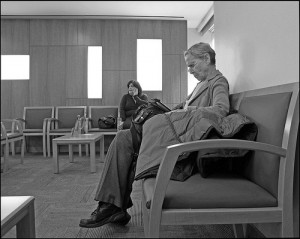Organ donation remains one of the most pressing and complex subjects in medical care. The recipient waitlist continues to grow: currently over 110,000 people in the U.S. are waiting for some form of major organ donation, and many of them will never get one — an average of 18 waitlist patients die every day for lack of a donation. Though the concept enjoys a high level of public support, allocating donated organs is difficu lt and logistically complex, and raising American registration rates has proven just as elusive.
lt and logistically complex, and raising American registration rates has proven just as elusive.
A successful organ transplant is a highly involved and difficult procedure, and logistical and compatibility concerns further complicate the process. In 1998 then-Health and Human Services Secretary Donna Shalala proposed a reform of the organ allocation procedures to prioritize medical need over geographical concern. While this might sound worthy in concept, in practice there was little effect, as most organs have a very short lifespan following the death of a body, and must be transferred almost immediately. If an organ donor incurred a fatal car accident in Los Angeles, but a critically ill, blood- and tissue-compatible recipient lived in Atlanta, this person would have to quickly fly to Los Angeles, get to the hospital, prepare for and undergo a difficult and taxing surgery, all in the short window between when the organ is available and when it ceases to be functional. One can see, then, with a national organ donor registration rate of only about 35%, how rare such procedures can be.
Many experts agree that increased donation rates would help to drive the waiting list numbers down: in 2001, 6,000 people died for lack of a donation, yet there were 9,000 deaths of individuals whose organs could have been, but were not, put to use. Since then the statistics have only gotten worse, as the waiting list has grown from some 65,000 in 1998, to 75,000 in 2001, to its current level of 111,017 individuals. There are many reasons for the surge in waitlist numbers: a sharp decrease in traffic fatalities, incidents which tend to offer ideal conditions for organ transplantation, has limited the number of available donations; doctors, who now perform organ transplantation surgery to better effect, have begun to recommend the procedure to a greater number of patients.
When all is said and done, awareness and discussion remain the best hope for increasing donation rates. A person who has discussed organ donation with loved ones prior to an accident will be far more likely to agree to become a donor, as will their family to allow it. Says Cathy McCall, whose son Jim became a donor following a fatal motorcycle accident, “People should think and talk about it now, before something happens. They should discuss it with their families. I knew Jim wanted to be a donor before it happened. We’d discussed it with him and he’d made his decision.” Today Cathy advocates increased awareness of the issue through the LifeDonor USA Foundation, a non-profit in Arizona that organizes registration drives, and promotes increased awareness and family discussion. There are certainly myths to dispel, and taboos to break, in making organ donation a comfortable concept. Many persist in the mistaken belief that organ donation leads to the disfigurement of remains. Organizations like LifeDonor USA and Transplant Recipients International Organization, can help to dispel these sorts of myths. Of course, conversations about death are never easy; but as a nation, we still need to have them.
For further information on registering as an organ donor in your state, visit Donate Life.

 The State of Organ Donation Today
The State of Organ Donation Today




 The Spiritual Symbolism of Cardinals
The Spiritual Symbolism of Cardinals














